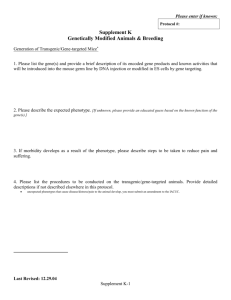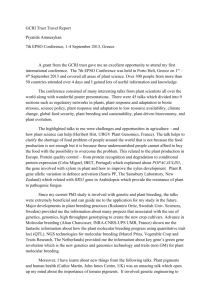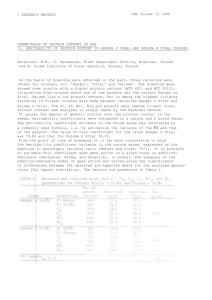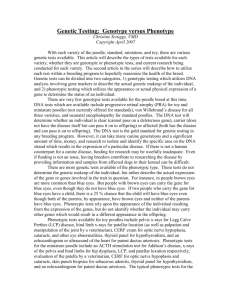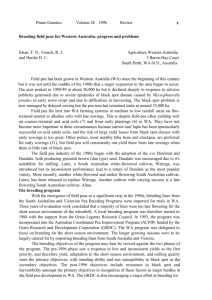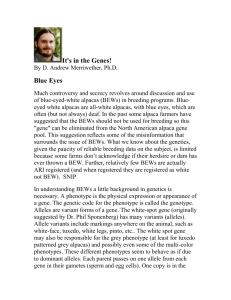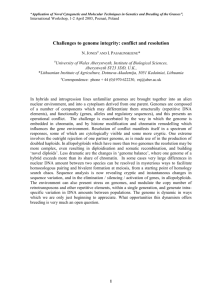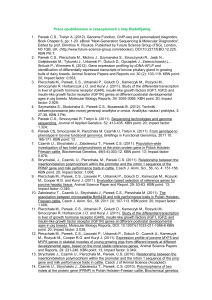breeders 78
advertisement
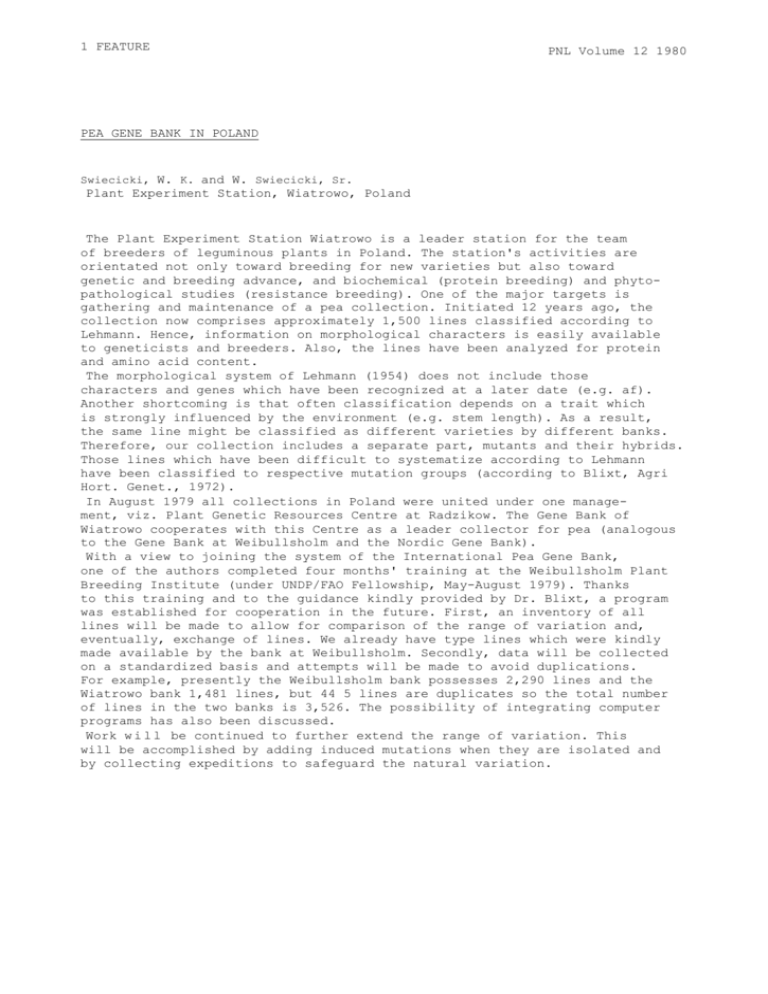
1 FEATURE PNL Volume 12 1980 PEA GENE BANK IN POLAND Swiecicki, W. K. and W. Swiecicki, Sr. Plant Experiment Station, Wiatrowo, Poland The Plant Experiment Station Wiatrowo is a leader station for the team of breeders of leguminous plants in Poland. The station's activities are orientated not only toward breeding for new varieties but also toward genetic and breeding advance, and biochemical (protein breeding) and phytopathological studies (resistance breeding). One of the major targets is gathering and maintenance of a pea collection. Initiated 12 years ago, the collection now comprises approximately 1,500 lines classified according to Lehmann. Hence, information on morphological characters is easily available to geneticists and breeders. Also, the lines have been analyzed for protein and amino acid content. The morphological system of Lehmann (1954) does not include those characters and genes which have been recognized at a later date (e.g. af). Another shortcoming is that often classification depends on a trait which is strongly influenced by the environment (e.g. stem length). As a result, the same line might be classified as different varieties by different banks. Therefore, our collection includes a separate part, mutants and their hybrids. Those lines which have been difficult to systematize according to Lehmann have been classified to respective mutation groups (according to Blixt, Agri Hort. Genet., 1972). In August 1979 all collections in Poland were united under one management, viz. Plant Genetic Resources Centre at Radzikow. The Gene Bank of Wiatrowo cooperates with this Centre as a leader collector for pea (analogous to the Gene Bank at Weibullsholm and the Nordic Gene Bank). With a view to joining the system of the International Pea Gene Bank, one of the authors completed four months' training at the Weibullsholm Plant Breeding Institute (under UNDP/FAO Fellowship, May-August 1979). Thanks to this training and to the guidance kindly provided by Dr. Blixt, a program was established for cooperation in the future. First, an inventory of all lines will be made to allow for comparison of the range of variation and, eventually, exchange of lines. We already have type lines which were kindly made available by the bank at Weibullsholm. Secondly, data will be collected on a standardized basis and attempts will be made to avoid duplications. For example, presently the Weibullsholm bank possesses 2,290 lines and the Wiatrowo bank 1,481 lines, but 44 5 lines are duplicates so the total number of lines in the two banks is 3,526. The possibility of integrating computer programs has also been discussed. Work w i l l be continued to further extend the range of variation. This will be accomplished by adding induced mutations when they are isolated and by collecting expeditions to safeguard the natural variation.
